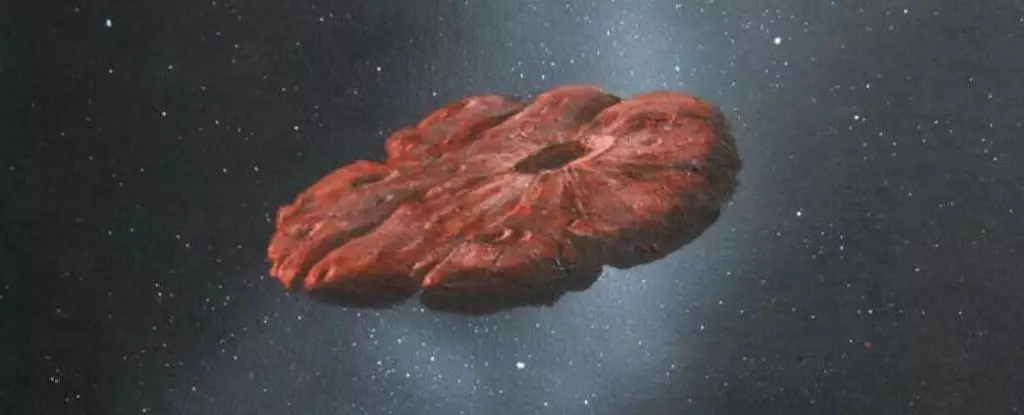In a remarkable twist of fate, late 2017 witnessed the passage of ‘Oumuamua, the first identified interstellar object (ISO) to jet through our Solar System. This elongated creation, measuring a staggering quarter mile in length, caught astronomers off guard due to its rapid speed and unusual profile. Named ‘Oumuamua—a Hawaiian term meaning “scout”—this cosmic visitor was confirmed to have originated from a distant star system, having traveled potentially for millions of years before arriving at our planetary doorstep. Astronomical wonders such as ‘Oumuamua and the subsequent discovery of the Borisov Comet have ignited interest among scientists regarding the material and secrets they bring from the vast expanses of space beyond our Solar System.
Despite these initial encounters tantalizing astronomers, they have also raised critical questions. With projections indicating a staggering multitude of ISOs throughout the Milky Way, why have only two been observed? The answer lies in the unpredictable nature of these cosmic entities and our limited technological capacity to detect and intercept them before they become fleeting specks in the cosmos.
The Nature and Challenges of Detecting ISOs
The realm of ISOs is fundamentally enigmatic. These celestial bodies are remnants from other star systems, having been expelled by cosmic cataclysms such as massive collisions or the gravitational forces of other planetary systems. Scientists estimate that there are more than 10 septillion ISOs zipping around our galaxy. However, our current detection mechanisms are ill-equipped to predict their arrivals accurately. Large ISOs like ‘Oumuamua are rare, and because they traverse space at staggering velocities—averaging over 27 kilometers per second—the window for interception is exceedingly narrow.
By the time we spot an incoming ISO, it is often too late to mobilize spacecraft for an up-close examination. Ground-and space-based observatories require prompt detection to devise interception strategies, yet the rapid departure of these entities makes it challenging to coordinate timely responses. Without the ability to position instruments or spacecraft in advance, most encounters will remain mere glimpses rather than thorough explorations.
Innovative Approaches to Interstellar Exploration
Despite the hurdles, the quest to examine ISOs more comprehensively is on the rise. NASA’s Bridge mission, for instance, aims to deploy a spacecraft quickly following the identification of an incoming object. Meanwhile, the European Space Agency’s Comet Interceptor, slated for launch in 2029, is designed to position itself in a “storage orbit” and await the opportunity to engage with long-period comets or other interstellar entities.
Realistically capturing an ISO involves significant engineering challenges, particularly concerning speed and efficiency. As fundamental missions commence, it is crucial to synergize advanced technologies like artificial intelligence and machine learning, which could enable spacecraft to make autonomous decisions in real time. Such innovations have the potential to optimize trajectory calculations, adaptively guiding spacecraft to accelerate the pursuit of transient objects.
The Next Generation of Spacecraft and Technologies
Looking ahead, the development of futuristic propulsion techniques will be vital for catching up with ISOs. Solar sails, which harness sunlight for propulsion, are gaining traction as an eco-friendly alternative, while laser propulsion could propel future spacecraft to atmospheric leaps in speed. Enhanced propulsion environments must also account for the harsh realities of space, requiring spacecraft to withstand extreme thermal conditions and potential erosion from dust particles emitted by targets.
Lightweight, durable materials become even more essential, leading researchers to assess various new compounds and technologies, including 3D-printed structures. Such innovations could ultimately allow for spacecraft to be resilient yet efficient, ensuring rapid responses to the astronomical events from which ISOs emerge.
The Importance of Coordinated Efforts
Collaboration between ground and space operations is also crucial for a fruitful approach to ISO encounters. The Vera C. Rubin Observatory, set to kick off a decade-long survey of the sky, promises to dramatically increase our understanding of ISOs by revealing dozens annually. By leveraging a multi-faceted approach that includes innovative detection measures through terrestrial telescopes and orbital missions, the dream of capturing interstellar wanderers can inch closer to reality.
Despite the overwhelming potential for breakthroughs in technology and discovery, budget cuts to key space science programs like the James Webb Space Telescope signal worrying challenges for future endeavors in this field. Emergent technologies must be prioritized to turn what is currently a distant possibility into an actionable mission. Without active investment and innovation, humanity risks observing ISOs solely from a distance, relegated to the role of spectators as these celestial messengers speed toward unknown destinations in the cosmos.
Exploring the realm of ISOs not only enhances our understanding of cosmic dynamics but also offers insights into the mysteries of our universe. It is an exhilarating frontier, ripe for exploration and discovery, but it necessitates an unwavering commitment to technological sophistication and collaborative spirit.


Leave a Reply